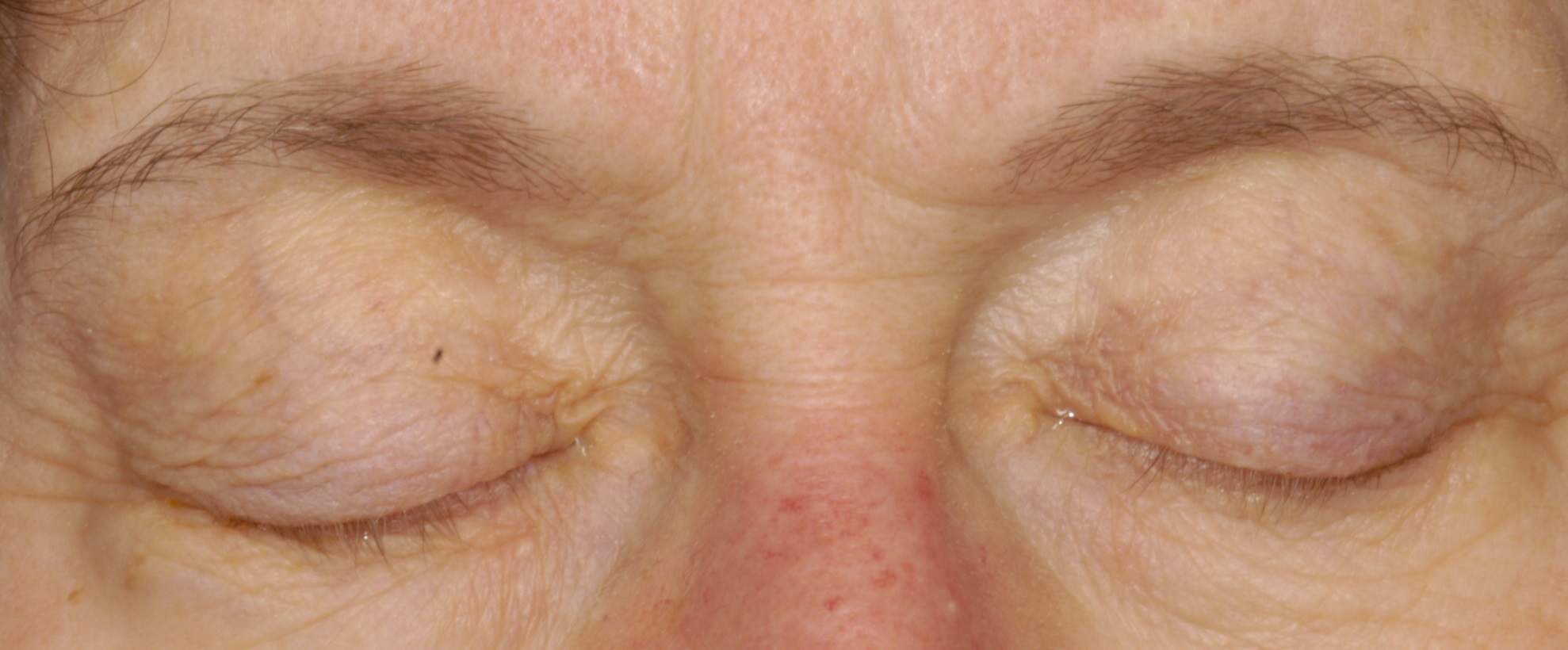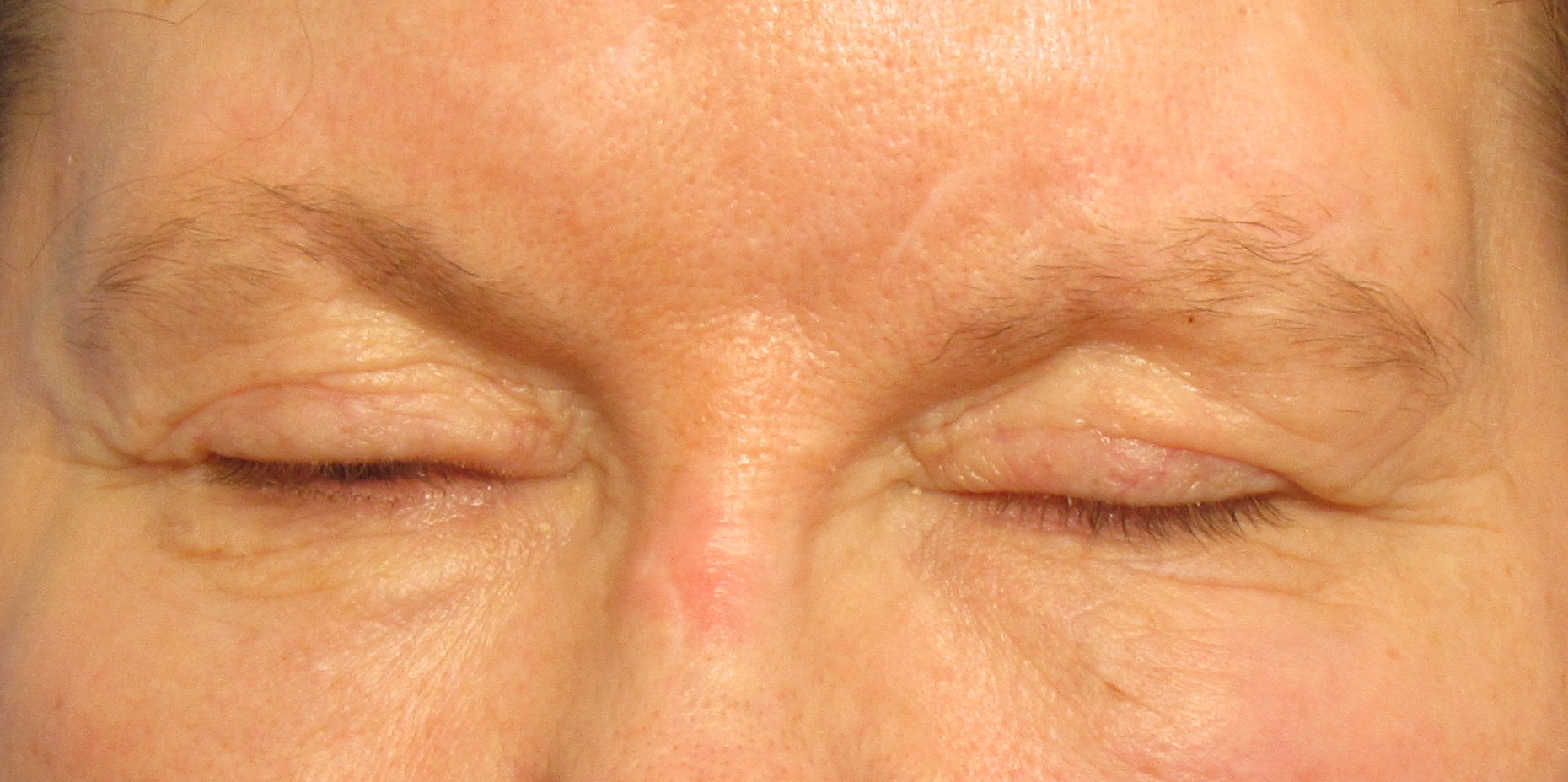Benign Essential Blepharospasm
- Involuntary bilateral lid closure
- May be a focal dystonia, a facial tic, or idiopathic
-
Core clinical features
- Intermittent bilateral activation of the orbicularis oculi on both sides produces squeezing of the eyelids and eye closure
- No pertinent neurologic or systemic illness
-
Possible accompanying clinical features
- Initial symptom is photophobia
- Episodes become more frequent and easier to provoke over time
- Exacerbated by social interactions
- Relieved by ritual maneuvers like humming, meditating, touching face
- Tic-like mouthing movements (“Meige syndrome”)
-
Bilateral severe ptosis
- Does not have orbicularis oculi contraction
-
dermatochalasis
- Caused by obvious loose overhang of upper lid skin
-
Trap: many patients with blepharospasm are initially misdiagnosed as having ptosis or dermatochalasis, triggering inappropriate surgery for these conditions
-
Post-paretic facial contracture
- Follows facial palsy, is almost always unilateral, and is never intermittent
-
Hemifacial spasm
- Differs in being strictly unilateral
-
Dry eye syndrome, other surface keratopathies, uveitis, cone dystrophy, albinism, meningitis, migraine, anxiety
- Orbicularis oculi contraction is less than in benign essential blepharospasm and differs in being triggered by bright light (“photophobia-induced squinting”)
-
Apraxia of lid opening
- Is often accompanied by parkinsonian features


-
Rule out imitators by finding their corroborative signs
- Corneal epithelial defects, rapid tear break-up time, as in ocular surface disease
- Anterior uveitis
- Narrowed retinal arterioles, as in cone dystrophy
- Bradykinesia, rigidity, tremor, as in parkinsonism
- Involuntary facial movements, as in tic disorder
- Try anxiolytic medication or psychotherapy if you diagnose anxiety
- If no underlying cause is found, prescribe periocular botulinum toxin injections
- Botulinum toxin injections usually relieve symptoms for 3–4 months, can be repeated, and will usually provide long term relief
- Side effects of botulinum toxin injections--ptosis, exposure keratopathy, diplopia—are temporary and tolerable
- Patients who fail botulinum toxin treatment may sometimes get relief from anxiolytics or psychotherapy aimed at obsessive compulsive disorder
- Orbicularis oculi myectomy is rarely necessary
